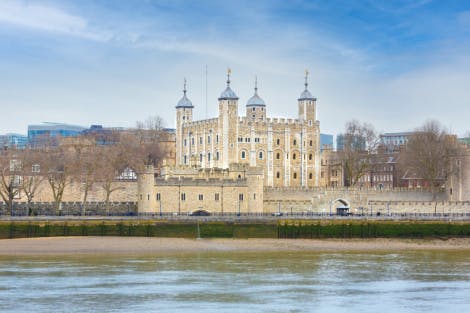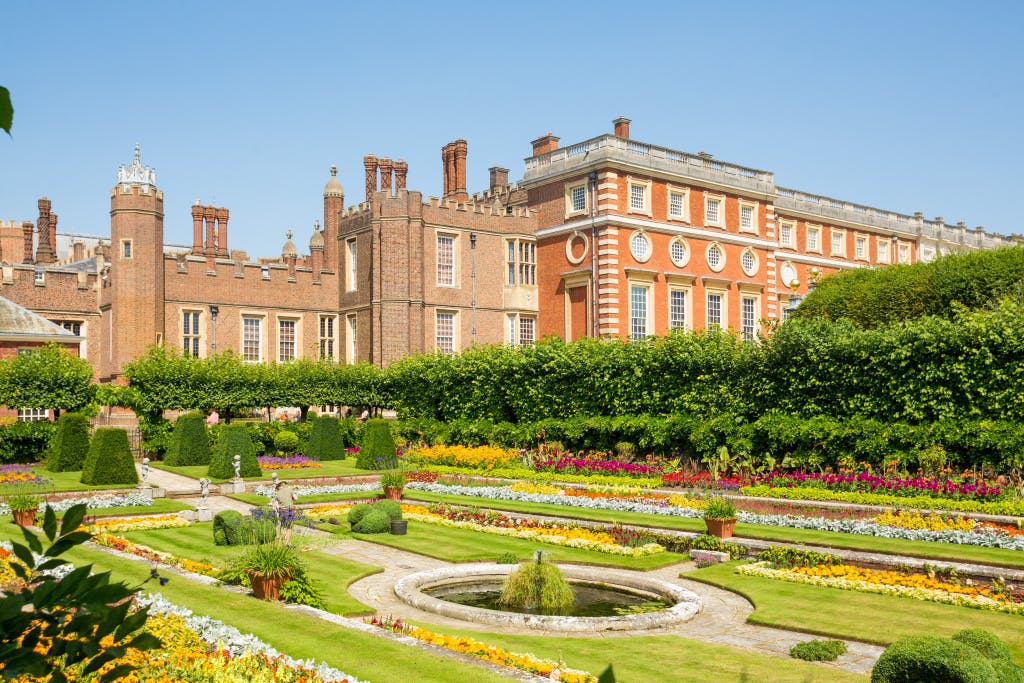Elizabeth I: History's Healthiest Monarch? Fitness tips from the Tudor Queen
Date: 15 January 2024
Author:
Tracy BormanElizabeth I was top of the Tudor tree when it came to health and fitness. Although she declared that she was ‘no morning woman’, it was her habit to go on vigorous early morning walks in the grounds of her palaces. And, always a resourceful woman, she chased away ‘melancholy’ with a whole host of entertaining pursuits.
Take (secret) walks in the morning air
Elizabeth was particularly fond of the gardens at Hampton Court Palace and ordered that the windows overlooking the ponds area to the south of the palace be blocked out so that she could ‘walk secretly all hours and times without anyone looking upon her out of any place.’
In 1602, while in her late sixties, the Queen was spotted by a foreign visitor at court, who was astonished when ‘Her Royal Majesty passed us several times, walking as freely as if she had been only eighteen years old.’
Image: The 'Darnley portrait' of Elizabeth I, thought to date to around 1575. © National Portrait Gallery, London

Dance like everyone is watching
On rainy days, Elizabeth stayed indoors and practised her dance steps. She was a highly accomplished dancer and loved to perform energetic routines such as the galliard or volta; she would have given the Strictly Come Dancing professionals a run for their money! The volta involved being thrown several feet into the air by a partner, so was not for the faint-hearted.
Dancing helped Elizabeth to stay fit throughout her life. She was still out-performing every other lady at court when she was approaching 70 years old.
Take time to relax...
For all her restless energy, Elizabeth did know how to relax. One of her main pleasures was bathing, and she made sure it was as luxurious and entertaining as possible. At Whitehall Palace, on the site of the Banqueting House, she had the Tudor equivalent of a sauna, heated by a ceramic tiled stove. There was also a splendidly arrayed bathroom which, as well as a large bath, contained an elaborate water feature where ‘the water pours from oyster shells and different kinds of rock.’
Next to the bathroom was a room containing an organ so that the Queen could be serenaded while she soaked in the tub.
Elizabeth’s other sedate pastimes included reading. Often, she would read to herself, but on other occasions she would command her ladies to read aloud (in several languages) for her amusement.
The Queen’s private library at Hampton Court was stocked with books on a variety of different subjects. It also included a number of more unusual items, such as a walking stick made from a unicorn’s horn and a horn cup that was reputed to break if it came into contact with poison. The Queen also liked to distract her mind from the pressures of state business by translating ancient Greek and Roman texts.
Image: Ceramic tile fragments recovered from excavations of Whitehall Palace, once part of Elizabeth I’s bathroom. © Historic Royal Palaces

...But don’t forget to have fun
Elizabeth wasn’t averse to more frivolous diversions. She spent many hours playing cards, backgammon, gambling or gossiping with her ladies in private about the latest scandals and events at court.
The Queen also followed the traditional private pastime of female royals: embroidery. By the time she came to the throne in 1558, Elizabeth was exceptionally skilled with a needle. At the age of just five, she had presented her infant brother Edward (the future Edward VI) with ‘a shirt…of her own working’. She subsequently produced three exquisitely embroidered manuscript books which she presented to her father, Henry VIII and his sixth wife, Katherine Parr, as New Year gifts.
Pursue your passions
But there was one pastime which the Queen kept secret – for good reason. Alchemy, the art of turning base metals into gold through the discovery of a universal elixir known as the ‘philosopher’s stone’, bordered on witchcraft.
Elizabeth was so fascinated by it that she had a suite of private rooms at Hampton Court filled with alchemical equipment and potions, and she and her astrologer Dr John Dee would closet themselves away there for hours.

Declutter your royal wardrobe
And for those days when alchemy, fitness, gossiping and numerous other pursuits just didn’t cut the mustard, she could always resort to clearing out her wardrobe. The Venetian Secretary to England may have been exaggerating when he claimed Elizabeth owned 6,000 dresses, but at the time of her death in 1603 there were 1,900 in her possession.
Those gowns which she had grown tired of or which she (reluctantly) admitted didn't suit her, she gave away to her ladies and favourites. Chief among the latter was her longest-serving attendant, Blanche Parry, in whose memory she may have bequeathed the exquisite ‘Rainbow Portrait’ dress. This is the only dress from Elizabeth’s wardrobe known to have survived and, after being discovered in a church in Bacton, Herefordshire, a few years ago (where it was masquerading as an altar cloth), it is now being cared for by Historic Royal Palaces.
So why not chase away the blues by rifling through your own wardrobe for long-forgotten treasures? Who knows what you might find…
Image: The Bacton Altar Cloth during conservation at Hampton Court Palace. © Historic Royal Palaces / Courtesy of St Faith's Church, Bacton
Tracy Borman
Chief Curator
Historic Royal Palaces
More from our blog

A model of queenship: Lady Elizabeth's summer with Katherine Parr, 1544
20 September 2024
Tracy Borman travels back to 1544, when Elizabeth spent a happy summer at Hampton Court Palace watching her beloved stepmother, Katherine Parr act as Regent. This visit would have an enduring impact on the young princess.

Elizabeth I's Brush with Death at Hampton Court, 1562
06 September 2024
In 1562, Elizabeth I was taken suddenly and dangerously ill at Hampton Court Palace. Her courtiers were thrown into panic; if the young Queen died, it could spell the end of the Tudor dynasty.

Elizabeth I’s coronation procession from the Tower of London
17 November 2022
Curator Charles Farris recalls Elizabeth’s dramatic procession from the Tower of London to Westminster the day before her coronation.

